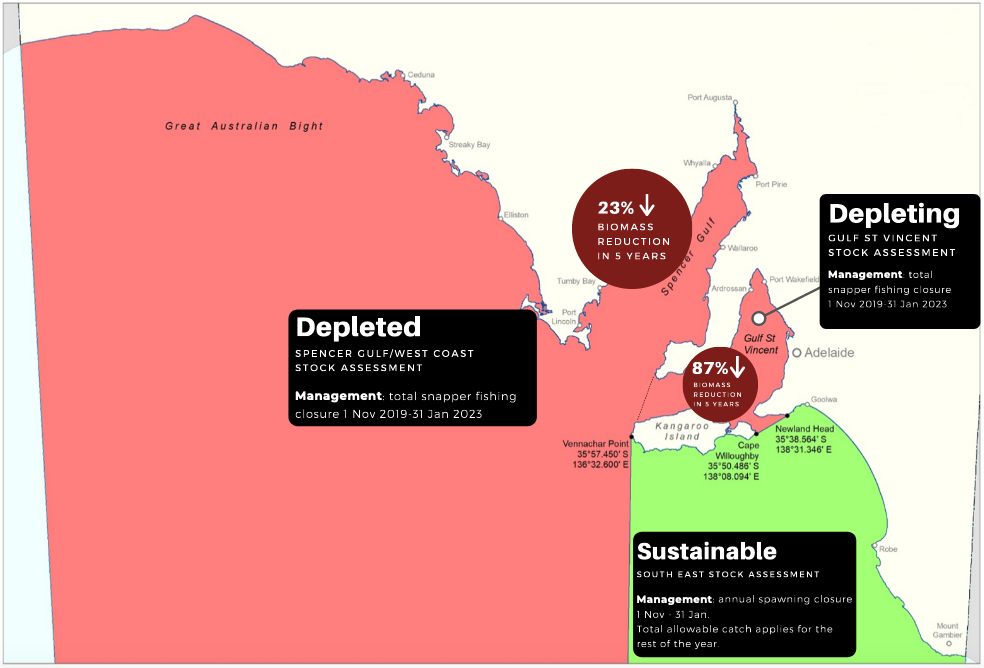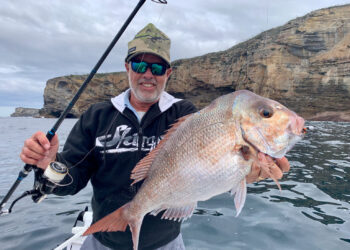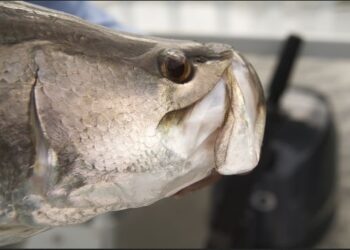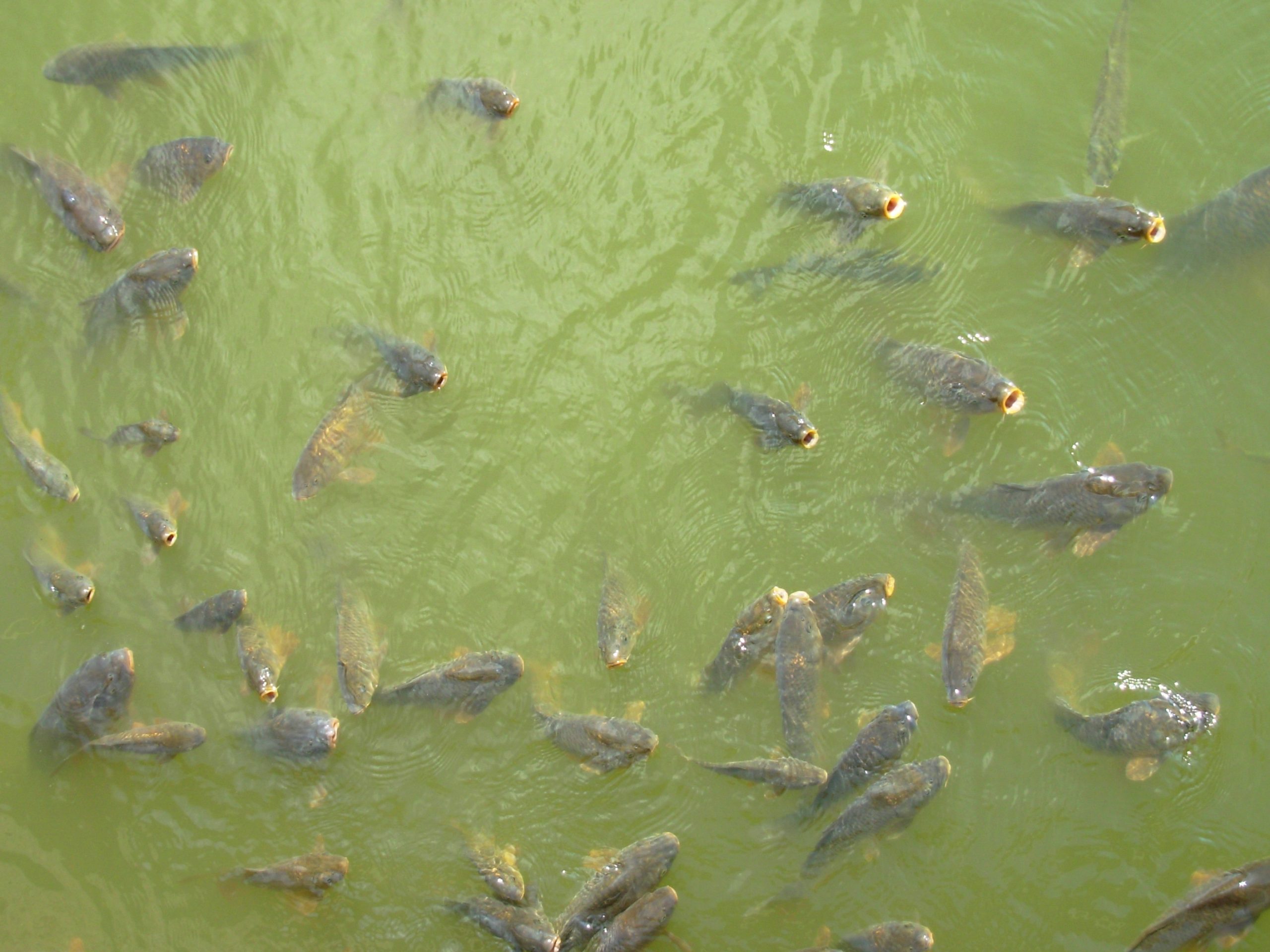
THE South Australian Government is pushing ahead with its three-year plan to ban snapper fishing in the state’s coastal waters.
The proposed introduction of a “statewide” ban from November 1 followed a stock assessment that revealed a drastic decline in snapper stocks in gulf waters.
The ban will target Gulf St Vincent and Spencer Gulf as well as the state’s west coast and is set to continue until February 2023.
Snapper fishing will continue off the south-east coast under strict controls, with the Government promising a multi-million-dollar support package to help businesses stay afloat.
What is changing?
- Total Snapper closure will apply to waters in the West Coast, Spencer Gulf and Gulf St Vincent regions from 00:01 hrs on 1 November 2019 to 23:59 hrs on 31 January 2023.
- Annual seasonal Snapper closure will apply to waters in the South East region from 00:01 hrs 1 November to 23:59 hrs 31 January each year.
- During the closures, the targeting, take and/or possession of Snapper will be prohibited in these waters. $315 on-the-spot fines or, if prosecuted, a maximum penalty of $20,000 may apply.
- Accidentally hooked Snapper caught while fishing for other species must be carefully handled to immediately return it to the water. Catch and release fishing is strictly prohibited.
- For the remainder of the year, the South East region will be open to fishing. However, to ensure protection of the South East Snapper stock, a total allowable catch (TAC) will be set and shared between all fishing sectors – commercial, recreational and charter. If the TAC is reached, the fishery will be closed.
The Australian Fishing Trade Association (AFTA) has labelled the decision as “an extremely dissapointing result for the recreational fishing industry” on its Facebook page.
Primary Industries Minister Tim Whetstone acknowledged the ban will have huge impacts and told the ABC it was based on science.
“The snapper stocks are in a dire, decimated situation,” Whetstone said.
Whetstone also said the decision followed broad community consultation, and that the Government had received more than 900 submissions before making its final decision.
“We understand the magnitude of impact it will have on our fishing communities, and so we will work with them to support them.” He said.
Charter tour operator Ray Cook has operated in Gulf St Vincent out of Wallaroo for 17 years, but last month told the ABC he would have to shut down if the ban was brought into effect.
“As far as our business goes, it will cease probably as soon as the ban comes in,” Cook said in August.
“I’ll sell the boat, I suppose. That’ll be the first thing. And then seek compensation. They’re taking our livelihoods away.” He said.
However, the State Government said it would attempt to offset some of the impacts through a support package.
Measures include reducing commercial fishing licence fees, investing in snapper science and restocking, as well as a diversification package aimed at charter boat operators.
The South Australian Government said it would also launch a new program under the banner “Stay Afloat” which would support the mental health and wellbeing of affected commercial fishers, charter operators and seafood processors.
Whetstone also encouraged fishers to consider targeting other species, but that idea has previously been criticised by Steve Storic, who runs a fishing charter business in Australia’s so-called “snapper capital” of Whyalla.
“I’ve basically structured my business to target snapper, so for me to go out and structure to target other species — obviously there’s more cost and outlay involved in that,” Mr Storic said in August.

Specific charter and recreational fishing restrictions
In addition to the closures, the following measures will apply to charter and recreational fishers:
- A total allowable recreational catch (TARC) will be set for the South East region from 1 February to 31 October each year. When the TARC is caught, the fishery will be closed to recreational and charter activities.
- The TARC will be set based on a scientific assessment of the maximum sustainable yield from this stock. From this total allowable catch, the proportional catch shares taken by the recreational and charter fishing sectors will be maintained at 18%.
- During the open season, increased management restrictions and appropriate compliance and monitoring will be undertaken in South East waters to ensure any shift in effort is controlled and does not jeopardise the health of the South East Snapper stock.
- A system to trial the use of Snapper recreational harvest tags will be developed and trialled in the South East. The number of tags will be limited to ensure the total recreational catch is constrained to within the TARC. During the trial, the recreational and charter catch of Snapper in the South East will no longer be managed by current bag and boat limits, but through the tag system instead. Size limits will still apply.
- Before a recreational fisher can target Snapper, they will be required to have a recreational harvest tag. Any legal-sized Snapper caught will have to be tagged upon capture. Full details on the harvest tag system will be released prior to the fishery opening on 1 February 2020.
- When the South East fishery reopens on 1 February 2020, recreational fishers will be required to use methods to maximise the survival of releasing Snapper, including using release weights.
Stay tuned for more news.




















